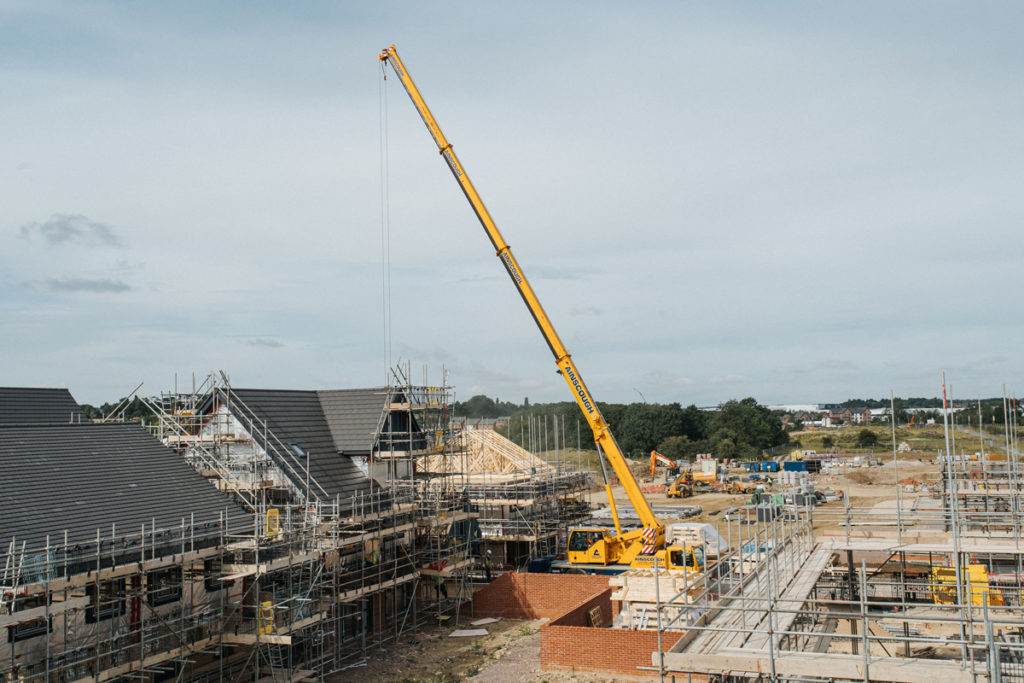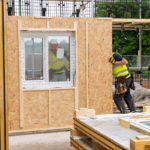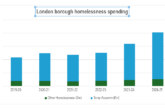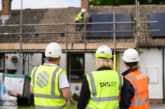Donaldson Timber Systems (DTS) has become the first timber frame manufacturer to offer a verified Pre-Manufactured Value (PMV) score of 55% or more.
Following a six-month material and labour cost analysis completed by specialist construction consultancy, Cast Consultancy, the DTS Sigma II build system has been verified to achieve a minimum of 55% PMV, increasing to 58% for a detached home.
In conjunction with the Stewart Milne Group, the DTS timber system was tested on a live project, on a range of building typologies, including a two-bed mid terrace, a three-bed end-terrace and a four-bed detached home. In these tests, the DTS Sigma II build system achieved a verified PMV of 55.7%, 55.8% and 58.4% respectively.
PMV is a way of calculating the proportion of a building’s construction that takes place offsite or near-site using any of the seven categories of Modern Methods of Construction (MMC). It can be achieved through a combination of offsite, near site and onsite manufacturing techniques, as well as through materials innovation and site-based process improvement and technology.
The PMV value of Sigma II is achieved by a combination of offsite elements of the build, including: traditional strip footings and in-situ suspended floor slabs; conventional brickwork external cladding; external doors installed on site; conventional felt, batten and tiled roof installed on site; services and internal linings to walls and ceilings installed on site; sanitaryware and kitchens installed on site; and pre-fabricated doorsets and stair flight, with handrail components installed on site.
The Affordable Homes Programme from Homes England, launched in 2021, requires all projects it funds to have at least 25% of the units delivered through MMC and a calculated PMV of 55%.
The verification by Cast confirms that DTS can achieve this target PMV value through the build system alone, when using the award-winning, BOPAS and BBA-approved, closed panel Sigma II Build System. While the system can be used in conjunction with other offsite technologies to further improve PMV, Sigma II achieves the target levels of PMV without reliance on any other offsite technologies.
 Cast Consultancy has published a PMV Technical Manual explaining how the calculations are carried out. The baseline for the calculator, building a ‘traditional’ house without any additional MMC elements, provides a PMV of just 39.74%. While adding a basic structural framing system, such as timber frame (MMC Category 2a), raises it up to 44.74%, it still falls short of the required 55%. Setting the target of 55% is pushing the industry to innovate and to drive more offsite construction.
Cast Consultancy has published a PMV Technical Manual explaining how the calculations are carried out. The baseline for the calculator, building a ‘traditional’ house without any additional MMC elements, provides a PMV of just 39.74%. While adding a basic structural framing system, such as timber frame (MMC Category 2a), raises it up to 44.74%, it still falls short of the required 55%. Setting the target of 55% is pushing the industry to innovate and to drive more offsite construction.
There are numerous benefits of increasing PMV, including increased quality and performance, improved productivity, minimal waste, faster on-site delivery and reduced health and safety risk.
John Smith, Technical Director at Donaldson Timber Systems, explained: “We were confident that our Sigma II Build System would deliver the required level of PMV, but it’s fantastic to be able to prove it. This is of particular interest to our clients who are building affordable homes, as this certification will make their lives easier when applying for funding through the Affordable Homes Programme because the use of Sigma II alone achieves the minimum target required to unlock funding and secure land from Homes England.
“We have long championed the use of offsite timber frame construction as the best way to achieve efficiencies and sustainable building practices, and we have developed our timber systems to ensure they are market-leading in every way. Our award-winning, third party certified Sigma II Build System is a robust and effective solution to achieving high levels of fabric performance.”
As part of the Donaldson Group’s Offsite division, DTS prides itself on being highly sustainable, innovative and efficient. With unrivalled experience and knowledge in offsite construction, DTS has an established history of bringing new commercial and operational innovations to the market.
The Sigma II closed panel system offers near-Passivhaus standards of performance and sustainability and is being widely used with housing developers, particularly with those driven by whole life costs and fabric performance, contributing positively to fuel poverty challenges.










